The underwater art saving the Great Barrier Reef
Six sculptures are a recent addition to a museum on the sea floor off Townsville and they are extraordinary.
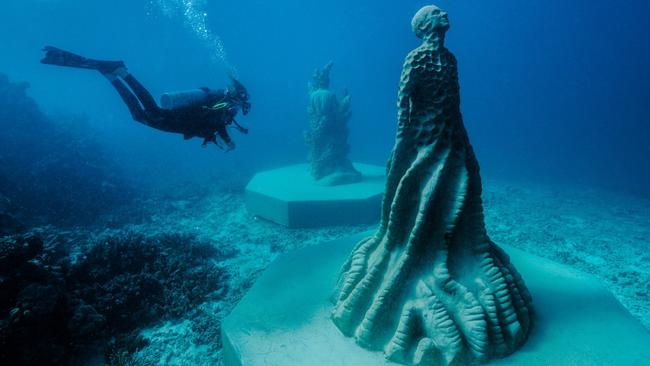
As Cyclone Kirrily barrelled towards Townsville last week, whipping up winds of more than 140km/h, eight guardians of the Great Barrier Reef stood steadfastly ready to face the storm. The category 3 cyclone passed over them, 5m below the ocean’s surface about 75km off the Queensland coast.
Known as the Sentinels, the collection of submerged 2.2m-high statues by world-renowned underwater artist Jason deCaires Taylor, play a symbolic as well as active role in protecting the world’s largest coral reef system.
Not only do they represent eight key figures in reef research, they provide coral and fish with a marine-friendly environment to call home.
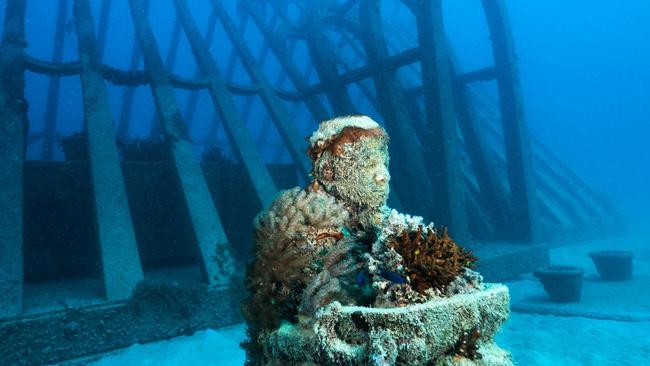
The statues were installed on the ocean floor at John Brewer Reef in May last year, the latest addition to the Museum of Underwater Art.
The attraction launched in 2019 with the unveiling of the Ocean Siren statue on the Townsville waterfront, a work that changes colour according to sea temperatures.
That piece was soon joined by the churchlike Greenhouse anchored on the sand adjacent to the reef. Here, human figures can be spied “planting” coral, peering through microscopes, and carefully tending their ocean home as boggle-eyed fish weave in and out of the installations.
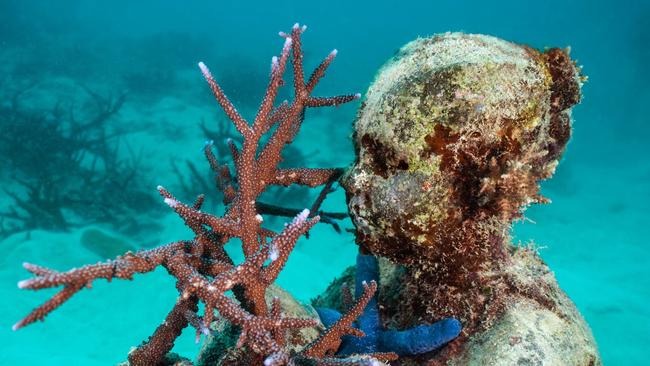
One week before Kirrily blows rowdily into town, I’m at MOUA on an outing with Adrenalin Snorkel and Dive.
It’s my second visit to the museum, having first scuba dived this corner of the reef in 2022, and I’m eager to see how things have changed.
On arrival at the site, I’m blown away, once again, by the blazing turquoise of the shallow water above the reef. In the muggy heat of January, my dive companions and I are keen to get wet, so we gear up and jump in as quickly as we can.
Diving on John Brewer ReefJohn Brewer Reef is a thriving ecosystem off the coast from Townsville.
As we descend, the sturdy arches of the Coral Greenhouse emerge from the gloom; after recent rains, visibility isn’t at its best. Nonetheless, it’s soon obvious that nature has been busy in my absence.
The figures in and around the structure are positively blooming. Spiky staghorn corals are shooting out in branches from a shovel held by the statue of a young man.
Hanging baskets are spilling over with soft maroon-hued carnation corals that wave gently in the current. Staghorn coral appears to have attached itself to the nose of the figure of a six-year-old girl holding a plant pot, modelled on deCaires Taylor’s daughter. It’s all apparently going swimmingly.
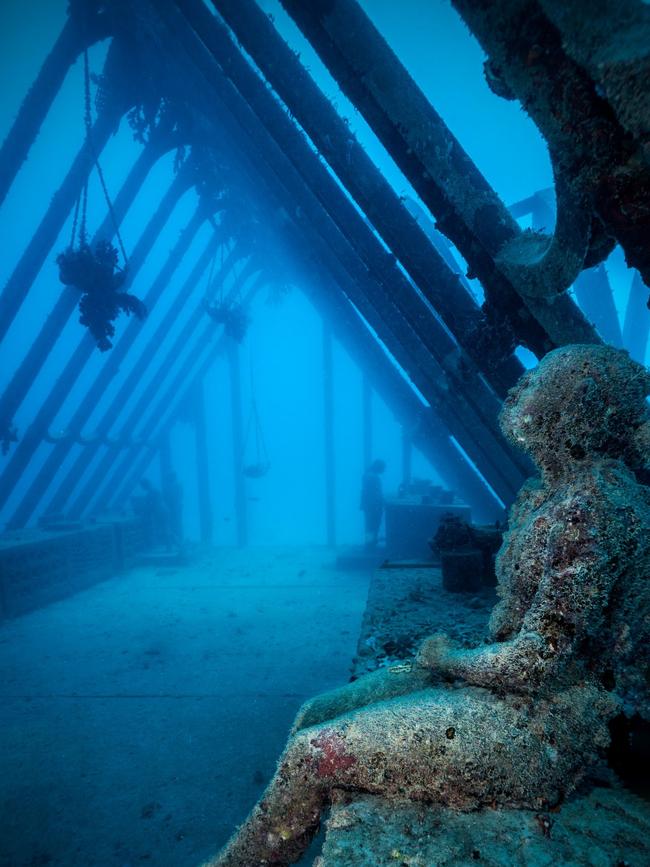
New on the scene, though, are those Sentinels. Weighing one to three tonnes a piece, they stand in quartet clusters at opposite ends of the Greenhouse. I snorkel over four of them, rather than do a second dive, and they are imposing, almost spooky; magnified by the water to giant proportions. I duck dive down and come face-to-face with the legendary Charlie Veron, his head sitting atop a body of concrete “coral” that reaches down to the sea bed.
The former chief scientist at the Australian Institute of Marine Science is known as the “godfather of coral”, responsible for identifying 20 per cent of all the species on the planet.
Veron has said of MOUA: “It’s about knowledge, it’s about beauty and it’s about people, and there’s a little bit of art and a little bit of science in all those things … (the museum) will make young people, especially, think and wonder and get interested. And what we need to do is to turn kids into little scientists with inquiring minds so … they’ll always keep with them a love of our coral reef.”
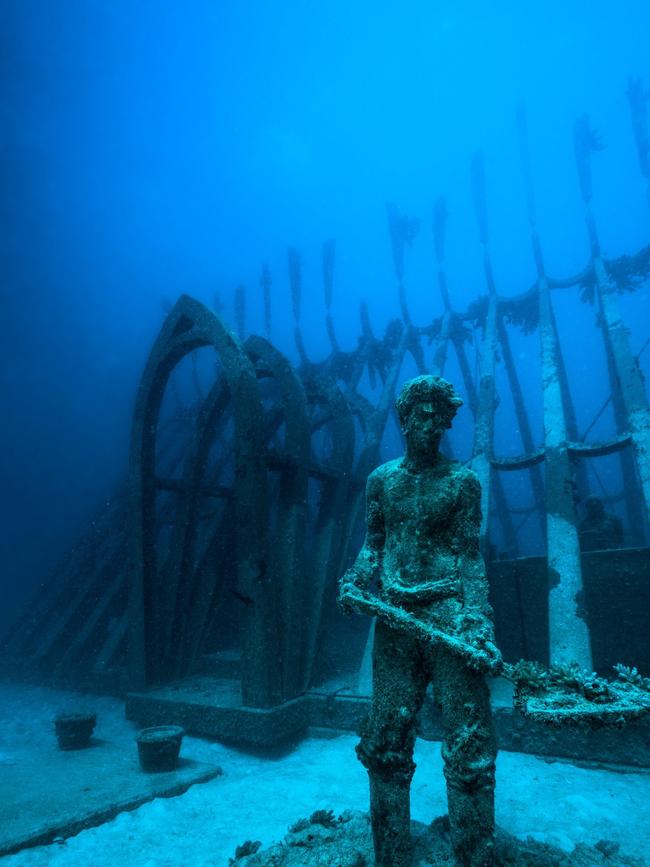
I find evidence of the inspirational impact of science when I snorkel over to another section of reef. Here, I stumble upon a young scuba diver who came out with Adrenalin to do her part for the Reef Census.
She’s suspended above a vast coral garden teeming with life and colour. Holding an underwater checklist in one hand, she ticks off coral and fish species and gives me a wave. She may not be made of concrete, but she’s a sentinel just the same.
In the know
The Museum of Underwater Art is accessible on day trips with Adrenalin Snorkel and Dive; $295 a person for snorkellers, $390 for certified divers including all gear, stinger suits, lunch and snacks.
Penny Hunter was a guest of Tourism and Events Queensland.


To join the conversation, please log in. Don't have an account? Register
Join the conversation, you are commenting as Logout